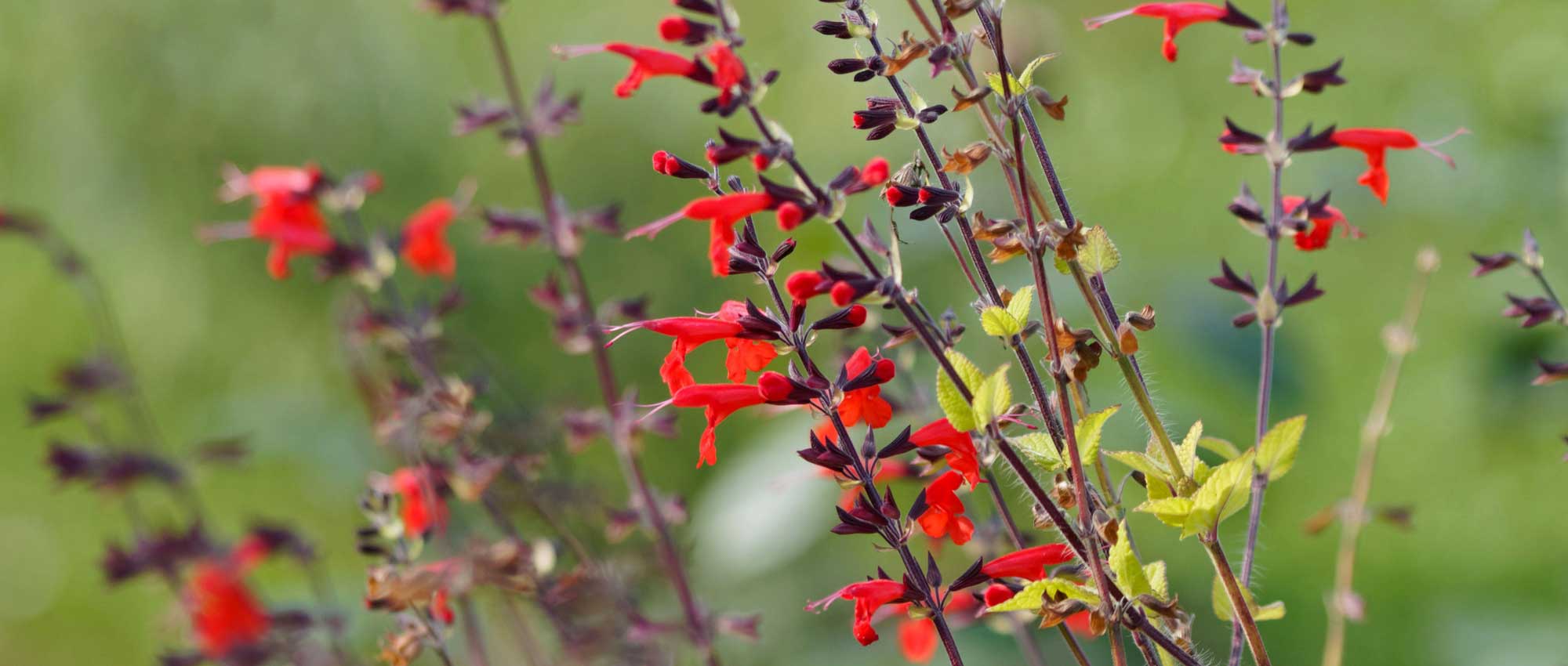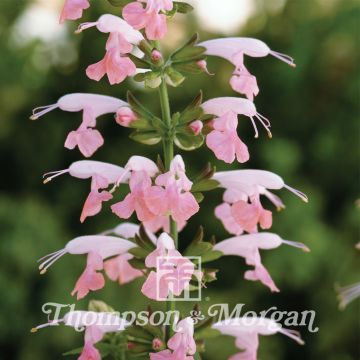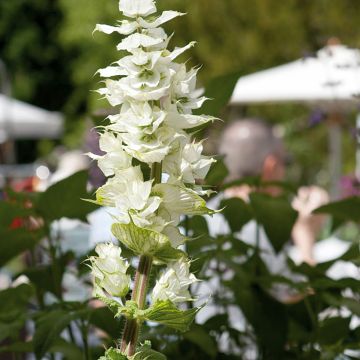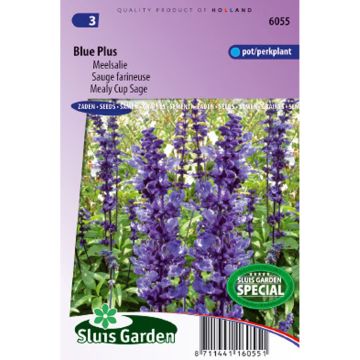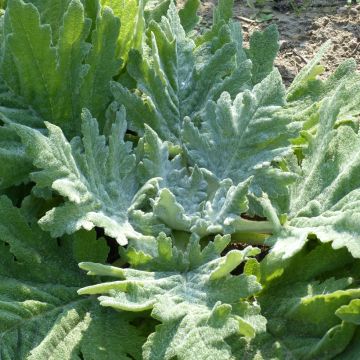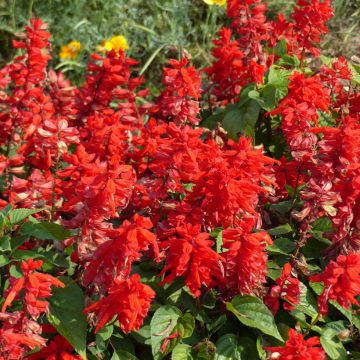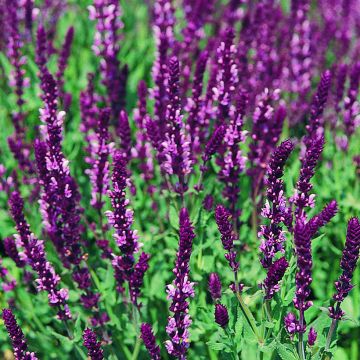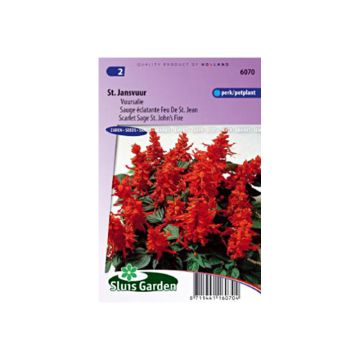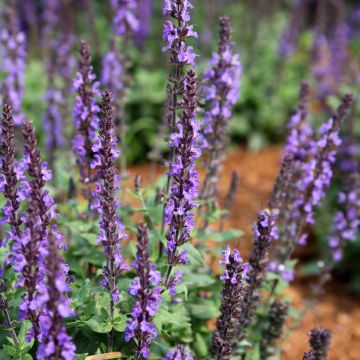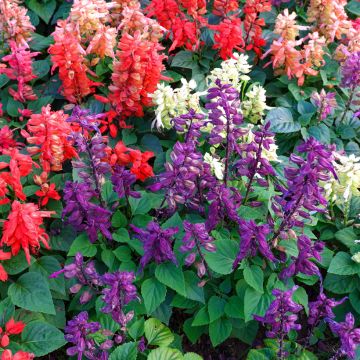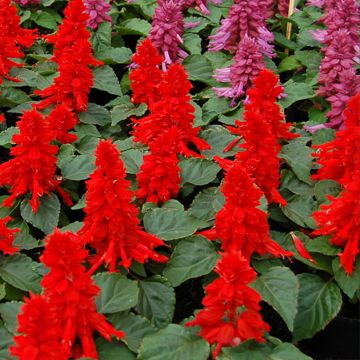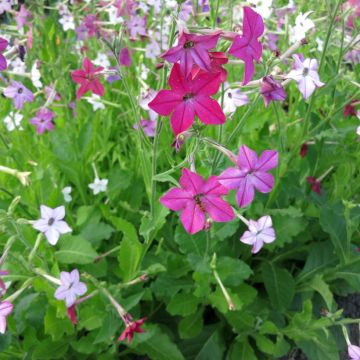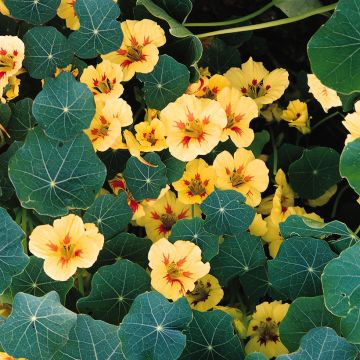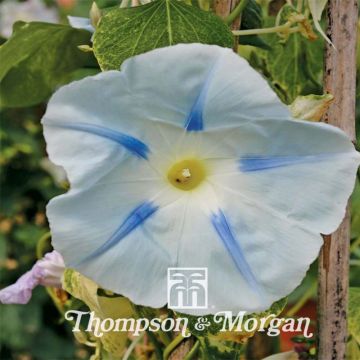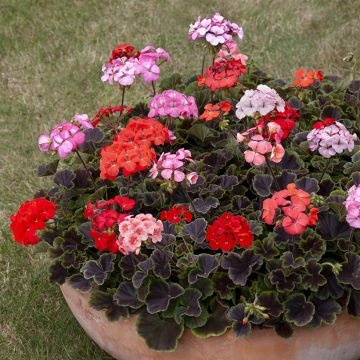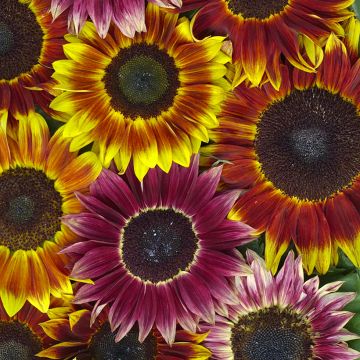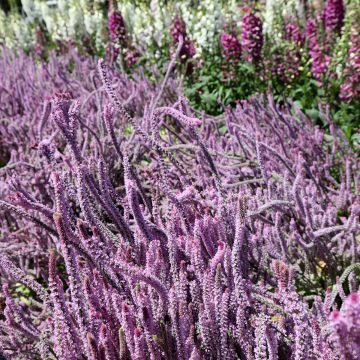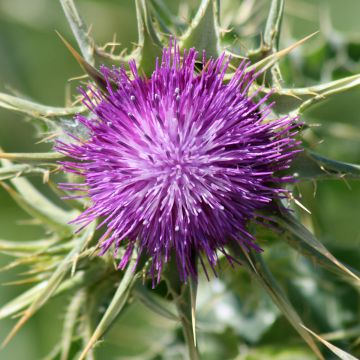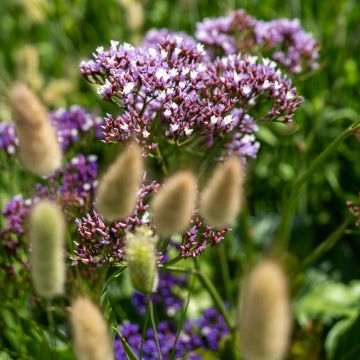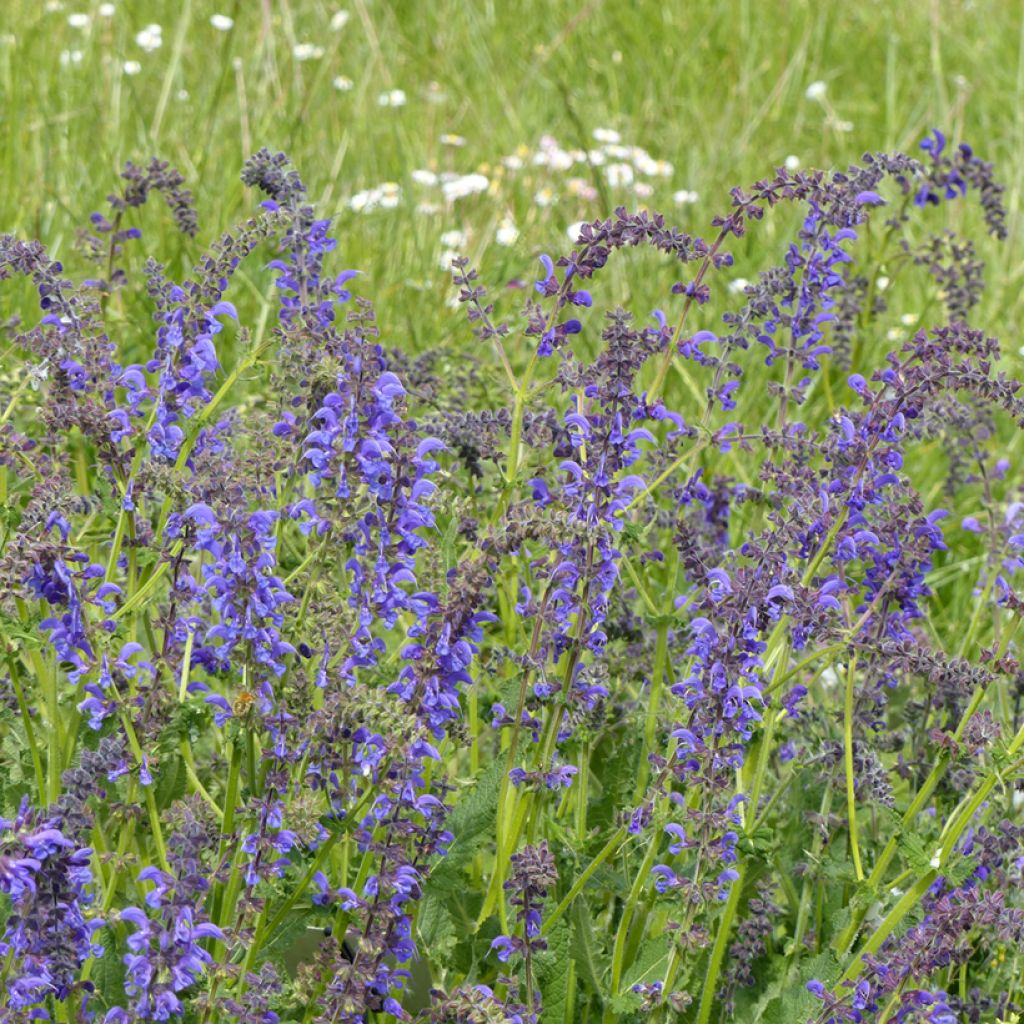

Salvia pratensis
Salvia pratensis
Salvia pratensis
Meadow Clary, Meadow Sage
Seeds sown in pots. Average germination, no seedling has surpassed the seedling stage, I didn't have time to plant them, they had disappeared before... Maybe worth testing directly in the ground...
Barbara, 06/09/2022
Special offer!
Receive a €20 voucher for any order over €90 (excluding delivery costs, credit notes, and plastic-free options)!
1- Add your favorite plants to your cart.
2- Once you have reached €90, confirm your order (you can even choose the delivery date!).
3- As soon as your order is shipped, you will receive an email containing your voucher code, valid for 3 months (90 days).
Your voucher is unique and can only be used once, for any order with a minimum value of €20, excluding delivery costs.
Can be combined with other current offers, non-divisible and non-refundable.
Home or relay delivery (depending on size and destination)
Schedule delivery date,
and select date in basket
This plant carries a 6 months recovery warranty
More information
We guarantee the quality of our plants for a full growing cycle, and will replace at our expense any plant that fails to recover under normal climatic and planting conditions.
Does this plant fit my garden?
Set up your Plantfit profile →
Description
The Field Sage, in Latin Salvia pratensis, is none other than this wild plant with the appearance of a charming weed that invites itself into ditches and fallow meadows. Extremely floriferous, this fragrant perennial plant that punctuates the landscape from spring to summer catches the eye, beautifully adorned with bright blue-purple flowers grouped in airy spikes. Hardy, water-efficient, and cold-resistant, it is one of the easiest plants to grow in all regions. Give it a place in a flower bed or along a path, and it will bring a very natural touch!
Native to Western Europe to the Caucasus, field sage is a very hardy herbaceous perennial plant that tolerates sun and dry limestone soils. Like all other sages, it belongs to the large family of Lamiaceae or labiates. Its foliage is semi-evergreen in winter, and its leafy stems form clumps that can cover a diameter of m (3ft) under very favourable conditions. It produces from June to August (less in hot climates) multiflorous inflorescences, reaching a height of 75cm (30in). The elongated bilabiate flowers are light blue-mauve, enclosed at the base in a violet calyx. Rich in nectar and pollen, they continue to bloom until the height of summer and are highly prized by butterflies and bees. The leaves are oval to oblong, rough, slightly wrinkled, with serrated edges. They form beautiful foliage. Their colour is a slightly dull dark green. The lamina is hairy, containing a fragrant essential oil, noticeable when crushed. The medicinal properties of this species are similar to those of common sage Salvia officinalis. Field sage has given rise to numerous cultivars with white, pink, blue, or purple flowers.
Field sage is vigorous enough to withstand competition from weeds. It excels on slopes, contributing to their stability with its deep anchoring roots, which allow it to draw moisture even during heatwaves. In this regard, it is perfect for maintaining the soil in rock gardens or along the banks of water bodies. It is a very resistant plant, tolerating prolonged periods of drought and Spartan growing conditions. It tolerates limestone well, even growing on chalky hillsides, and endures harsh winters without weakening. In a flower bed, for example, associate it with common viper's bugloss, its cousin common sage, red valerian, or scabious centaury. Also, combine it with old roses and Faassen's catmint, Lychnis coronaria, and light grasses... It goes well with all plants in the garden!
With over 900 species of annuals, perennials, and bushes distributed worldwide, except in very cold regions and the tropical forest, the genus Salvia is the richest in the family of Lamiaceae. The name Salvia, which dates back to Roman times, derives from the Latin salvus "healthy" in allusion to the medicinal virtues of common sage.
Flowering
Foliage
Plant habit
Botanical data
Salvia
pratensis
Lamiaceae
Meadow Clary, Meadow Sage
Caucasus
Other Salvia seeds
View all →Planting and care
Sowing advice: seed germination can sometimes be slow.
Sow from April to June directly in the open ground, in well-prepared and loosened soil, or from February in a tray or pot under heated shelter. In the open ground, keep only one plant every 50cm (20in).
Sow the seeds on the surface of good, light, moist, and well-drained soil. Cover with a thin layer of vermiculite or compost. Close tightly in a transparent plastic bag at a temperature of 18 to 25° until germination, which will take about 7 to 30 days. Expose the sowing to light, as it facilitates germination.
Transplant the plants, when they are developed enough to be handled, into 7.5cm (3in) diameter pots. Grow them in a cool place for 10 to 15 days before planting them outside in spring or autumn, spacing them 45-50cm (18-20in) apart.
Cultivation advice:
Plant common sage in ordinary soil, preferably limestone, but light and well-drained. This plant tolerates some drought once well established. It does not appreciate heavy and waterlogged soils in winter, which can harm its hardiness. Plant it in a sunny or semi-shaded position. It is an easy plant, very floriferous. In spring, optionally give it fertilizer and in April, cut back all the branches by half. After flowering, remove faded flower stems to stimulate and prolong flowering. To preserve the vitality of the sage, it is good to divide the plant after 3 years. Plant the new plants in well-worked soil: to improve slightly poor soil, mix in some compost.
Sowing period
Intended location
Planting & care advice
-
, onOrder confirmed
Reply from on Promesse de fleurs
Similar products
Haven't found what you were looking for?
Hardiness is the lowest winter temperature a plant can endure without suffering serious damage or even dying. However, hardiness is affected by location (a sheltered area, such as a patio), protection (winter cover) and soil type (hardiness is improved by well-drained soil).

Photo Sharing Terms & Conditions
In order to encourage gardeners to interact and share their experiences, Promesse de fleurs offers various media enabling content to be uploaded onto its Site - in particular via the ‘Photo sharing’ module.
The User agrees to refrain from:
- Posting any content that is illegal, prejudicial, insulting, racist, inciteful to hatred, revisionist, contrary to public decency, that infringes on privacy or on the privacy rights of third parties, in particular the publicity rights of persons and goods, intellectual property rights, or the right to privacy.
- Submitting content on behalf of a third party;
- Impersonate the identity of a third party and/or publish any personal information about a third party;
In general, the User undertakes to refrain from any unethical behaviour.
All Content (in particular text, comments, files, images, photos, videos, creative works, etc.), which may be subject to property or intellectual property rights, image or other private rights, shall remain the property of the User, subject to the limited rights granted by the terms of the licence granted by Promesse de fleurs as stated below. Users are at liberty to publish or not to publish such Content on the Site, notably via the ‘Photo Sharing’ facility, and accept that this Content shall be made public and freely accessible, notably on the Internet.
Users further acknowledge, undertake to have ,and guarantee that they hold all necessary rights and permissions to publish such material on the Site, in particular with regard to the legislation in force pertaining to any privacy, property, intellectual property, image, or contractual rights, or rights of any other nature. By publishing such Content on the Site, Users acknowledge accepting full liability as publishers of the Content within the meaning of the law, and grant Promesse de fleurs, free of charge, an inclusive, worldwide licence for the said Content for the entire duration of its publication, including all reproduction, representation, up/downloading, displaying, performing, transmission, and storage rights.
Users also grant permission for their name to be linked to the Content and accept that this link may not always be made available.
By engaging in posting material, Users consent to their Content becoming automatically accessible on the Internet, in particular on other sites and/or blogs and/or web pages of the Promesse de fleurs site, including in particular social pages and the Promesse de fleurs catalogue.
Users may secure the removal of entrusted content free of charge by issuing a simple request via our contact form.
The flowering period indicated on our website applies to countries and regions located in USDA zone 8 (France, the United Kingdom, Ireland, the Netherlands, etc.)
It will vary according to where you live:
- In zones 9 to 10 (Italy, Spain, Greece, etc.), flowering will occur about 2 to 4 weeks earlier.
- In zones 6 to 7 (Germany, Poland, Slovenia, and lower mountainous regions), flowering will be delayed by 2 to 3 weeks.
- In zone 5 (Central Europe, Scandinavia), blooming will be delayed by 3 to 5 weeks.
In temperate climates, pruning of spring-flowering shrubs (forsythia, spireas, etc.) should be done just after flowering.
Pruning of summer-flowering shrubs (Indian Lilac, Perovskia, etc.) can be done in winter or spring.
In cold regions as well as with frost-sensitive plants, avoid pruning too early when severe frosts may still occur.
The planting period indicated on our website applies to countries and regions located in USDA zone 8 (France, United Kingdom, Ireland, Netherlands).
It will vary according to where you live:
- In Mediterranean zones (Marseille, Madrid, Milan, etc.), autumn and winter are the best planting periods.
- In continental zones (Strasbourg, Munich, Vienna, etc.), delay planting by 2 to 3 weeks in spring and bring it forward by 2 to 4 weeks in autumn.
- In mountainous regions (the Alps, Pyrenees, Carpathians, etc.), it is best to plant in late spring (May-June) or late summer (August-September).
The harvesting period indicated on our website applies to countries and regions in USDA zone 8 (France, England, Ireland, the Netherlands).
In colder areas (Scandinavia, Poland, Austria...) fruit and vegetable harvests are likely to be delayed by 3-4 weeks.
In warmer areas (Italy, Spain, Greece, etc.), harvesting will probably take place earlier, depending on weather conditions.
The sowing periods indicated on our website apply to countries and regions within USDA Zone 8 (France, UK, Ireland, Netherlands).
In colder areas (Scandinavia, Poland, Austria...), delay any outdoor sowing by 3-4 weeks, or sow under glass.
In warmer climes (Italy, Spain, Greece, etc.), bring outdoor sowing forward by a few weeks.






























